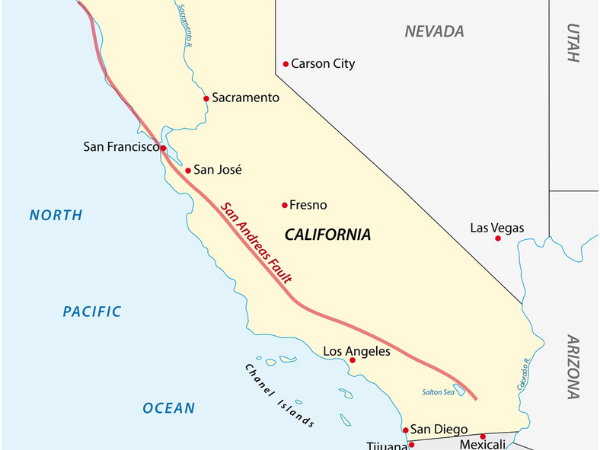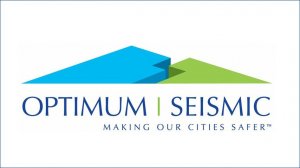San Andreas and Puente Hills Faults Vie for Attention

This article was provided by Optimum Seismic, Inc.
New Study Shows Nearby Segment has ‘Highest Likelihood’ of Triggering a Major Earthquake
Last winter, an alarming earthquake on the Puente Hills fault in the Los Angeles area had locals concerned with the potential death and destruction this previously underrated earthquake fault could bring. Since then, the temporarily overshadowed San Andreas – like a fallen prizefighter – has become the center of attention as a new study identified a strand of this fault as the primary Pacific-North American plate boundary connection at this latitude.
What does that mean? This so-called Mission Creek strand – starting in Indio and passing through the San Bernardino Mountains and into L.A. – may account for almost all the slip rate of this portion of the fault. In other words, it may bear the brunt of the burden of these two converging land masses in Southern California, according to the American Association for the Advancement of Science.
“(It) is the fastest slipping fault for the San Andreas in Southern California. Therefore, it has the highest likelihood of a large magnitude earthquake to occur on it in the future,” San Jose State University Geochronologist Kimberly Blisniuk, a lead author on the study, told LAist. Long thought to be moving at a rate of 14 millimeters per year, Blisniuk’s research, published in Science Advances, shows it moving at 22 millimeters a year – the fastest rate recorded along the San Andreas.
Meanwhile, a study last year by the University of Southern California says Puente Hills fault – running about 25 miles through the Los Angeles Basin, from downtown L.A., through Norwalk and La Mirada, and extending into Orange and San Bernardino counties – has the capacity to produce “the costliest disaster in U.S. history.” As many as 18,000 people could die, 735,000 could lose their homes, and up to 100,000 tons of debris could be generated. The total economic loss could be as high as $252 billion.
These high loss estimates are due mostly to its location: creeping underneath skyscrapers, heavily traveled infrastructure, older industrial buildings and much of the region’s more affordable and vulnerable housing stock.
Weighing the Risks
There are important variables to consider when weighing the decision to invest in seismic retrofits of existing buildings at-risk of serious earthquake damage. These variables include:
- Seismologic and geologic considerations such as the expected frequency and intensity of future earthquakes and whether the buildings are located on solid rock, firm soil, or poor soil sites.
- Engineering factors such as the variations in building design and construction quality, expected seismic performance of the buildings, methods available to rehabilitate the buildings, and the effectiveness of these methods in reducing casualties and damages from earthquakes.
- Economic impacts in weighing potential risks of ongoing loss of cash flow, liability, reconstruction, and environmental costs against the one-time cost of a retrofit.
- Social judgements which weigh potential loss of life and injuries versus potential costs of guarding against earthquake threats.
How much earthquake risk is acceptable when considering the potential for death and injury, reductions in future economic damages, preserving the local economy, securing private investments and business operations, and maintaining critical functions such as hospitals, fire, and police services?
Learn more about your options by arranging for a complimentary earthquake resilience assessment of your building by contacting Optimum Seismic today at (323) 605-0000 or email us at info@optimumseismic.com.
Learn more about the hazards we face, and how people throughout the state are working to address them by watching The Resilience Advantage – an ongoing webinar series featuring experts addressing risks, building safety, social concerns, and business and economic impacts associated with seismic resilience of buildings. The next webinar is from 11:00 a.m. to 12:30 p.m. on Wednesday, May 19, 2021 – with others planned throughout the year. For more information, visit optimumseismic.com/the-resilience-advantage. Past webinars are also posted there for those who missed any of the series.
Ali Sahabi, a licensed General Engineering Contractor (GEC), is an expert in seismic resilience and sustainability. He is Co-Founder of Optimum Seismic, Inc., which has completed more than 3,500 seismic retrofitting and adaptive reuse projects for multifamily residential, commercial, and industrial buildings throughout California. For more information, contact Optimum Seismic at (323) 678-4686.

